Table of Contents
As the New Year approaches in Japan, families and friends gather to celebrate with a feast of traditional foods known as Osechi Ryori. This colorful assortment of dishes is rich in symbolism and flavor, representing centuries of culinary history and cultural significance. In this article, we will explore the origins of Osechi Ryori, tracing its evolution over time and uncovering the role it plays in Japanese New Year celebrations. From the preservation techniques of ancient aristocrats to the modern-day traditions of home cooks and restaurants, Osechi Ryori offers a unique and delicious glimpse into Japan’s rich culinary heritage. So join us on a journey through time and taste, as we discover the fascinating world of Osechi Ryori.
Food plays a crucial role in Japanese culture, from daily meals to special occasions and ceremonies. Japanese cuisine is famous for its emphasis on fresh, seasonal ingredients, simple preparation methods, and beautiful presentation. This focus on quality and aesthetics is rooted in the idea of shun, or the appreciation of the natural cycles of life. In addition, food is seen as a way to connect with others and express hospitality. With many traditional customs and rituals surrounding the sharing of meals. For example, the act of preparing and serving tea in a formal tea ceremony is a way to demonstrate respect and gratitude to guests. Overall, food is a central aspect of Japanese identity and culture, representing a way to honor tradition, share experiences, and celebrate life.
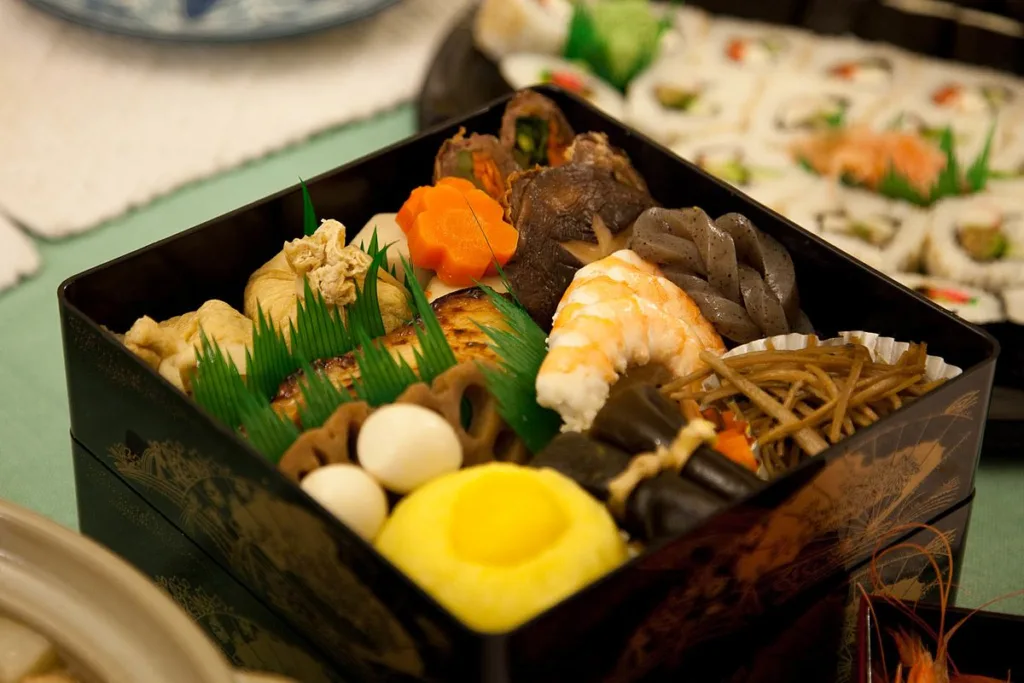
Osechi Ryori Meaning
Datemaki: Scholarship
It looks exactly like tamagoyaki (Japanese rolled omelet) but once you taste it you’ll know the difference. Datemaki, the sweet rolled omelet. they mix with an additional ingredient called happen (a fish cake) that makes it much fluffier than tamagoyaki. In the past, Japanese people traditionally rolled out important documents or paintings. Due to its resemblance to the scrolled papers. This dish represents a wish for the development of culture and learning.
Kuri-Kinton: Wealth
Kuri Kinton (sweet chestnuts) literally means “golden dango (sweet dumpling) made of chestnuts.” As the color is yellowish-gold. It goes without saying that it represents a wish for wealth and a fruitful new year. You may find it difficult to eat them as they are quite sticky. If you have a sweet tooth — keep some of them on your plate from the beginning of the party,
Kohaku Kamaboko: Sunrise
Kamaboko (boiled fish paste) is most commonly a combination of the colors — red and white. They believe red color to prevent evil spirits, while white represents purity. Furthermore, the shape of the kamaboko — resembling that of the sun at daybreak— represents the first sunrise of the new year.
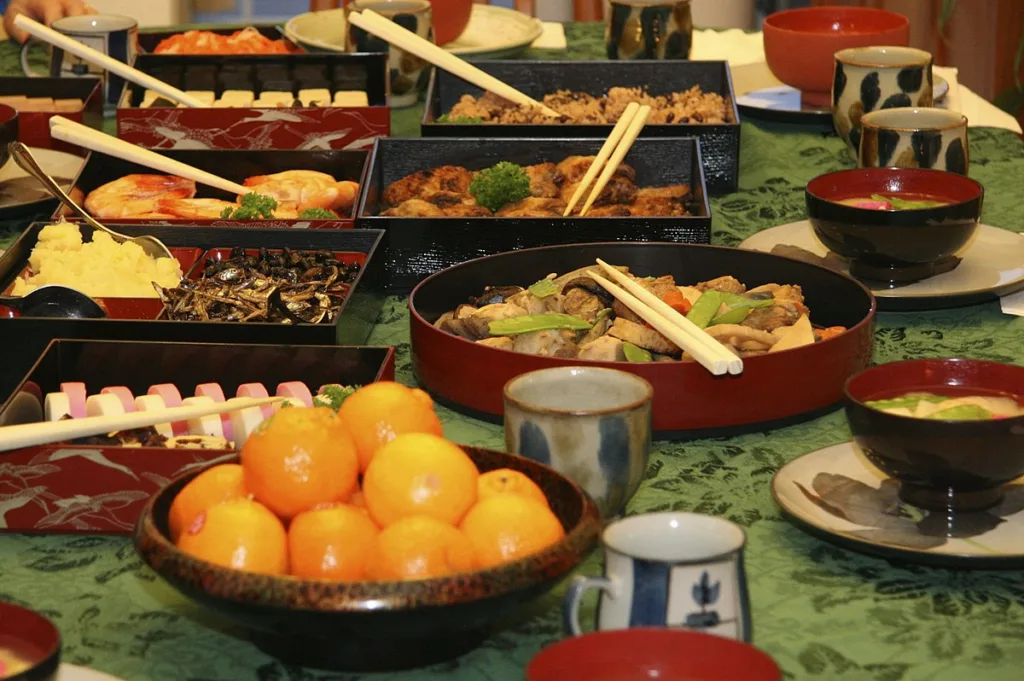
Kobu-maki: Happiness
The kobu, or kelp, served around seems to have different meanings. The first of which is quite simple. The word “kobu” It’s a Japanese homonym for “yorokobu,” which means joy and happiness. Kobu also symbolizes many offspring when written as “子生,” a kanji that represents childbirth.
Kazunoko: Fertility
Kazunoko, or herring roe, also uses easy Japanese wordplay. “Kazu” means numbers and “ko” means children. So, kazunoko symbolizes being blessed with many children. Another reason this particular type of fish is used, interestingly, is that herring is called “nishin” in Japanese, but if written with different kanji, it becomes “二親” (“ni shin“), meaning two parents.
Ebi: Longevity
Picture a shrimp. It has a bent back and two antennae that look like a long beard, don’t they? Therefore, the ebi (shrimp) on your plate is there to wish you a long life, until you have a bent back and long beard (sorry ladies, that happens). The red color makes the osechi look even more appealing and colorful, but some also say that it’s there to scare evil spirits away. Just like its friend kamaboko.
Kuromame: Health
According to Taoism, the color black works as a protection against evil spirits. Moreover, as the word “mame” originally means good health and strength in Japanese, kuromame (black beans) represents a wish to live and work in sound health during the next year.
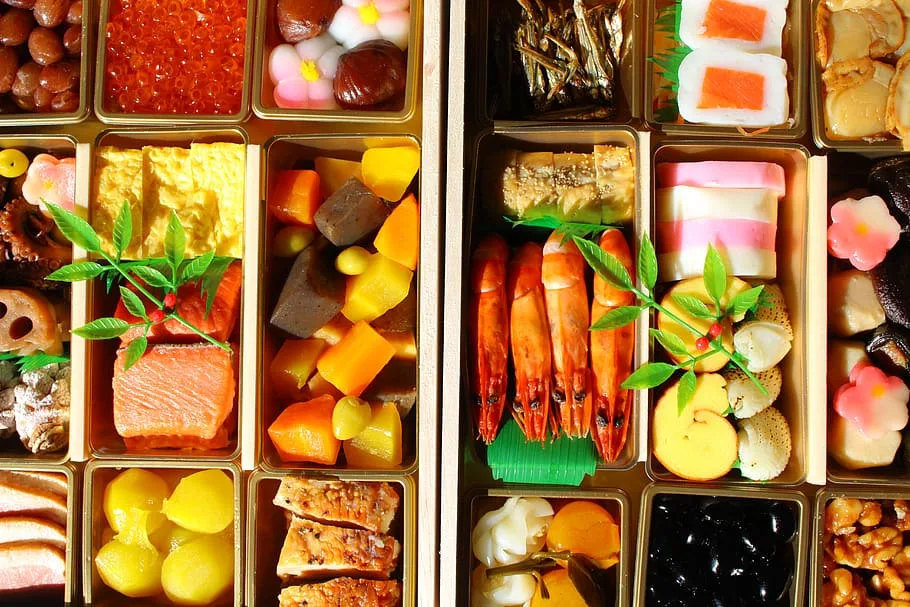
Tatsukuri (Gomame): Bounty
Translated directly into English, tatsukuri (dried, sweetened baby sardines) means rice farming. But what do sardines have to do with grains and agriculture? Well, a long time ago, Japanese farmers used dried sardines as a fertilizer for their rice fields. Its other name, gomame, literally means “50,000 grains of rice” and derives from the fact that sardine fertilizer produced a great harvest of rice. so tatsukuri is a symbol of a good harvest for the next year.
Renkon: Foreseeable, good future
Buddhism adores renkon (lotus root) as a plant of purity, as people believe it is to grow in the heavenly pond where the Buddha lived. Lotus root represents a happy future without obstacles. Why? Well, look through the holes in the renkon — you can clearly see the other side without any interference.
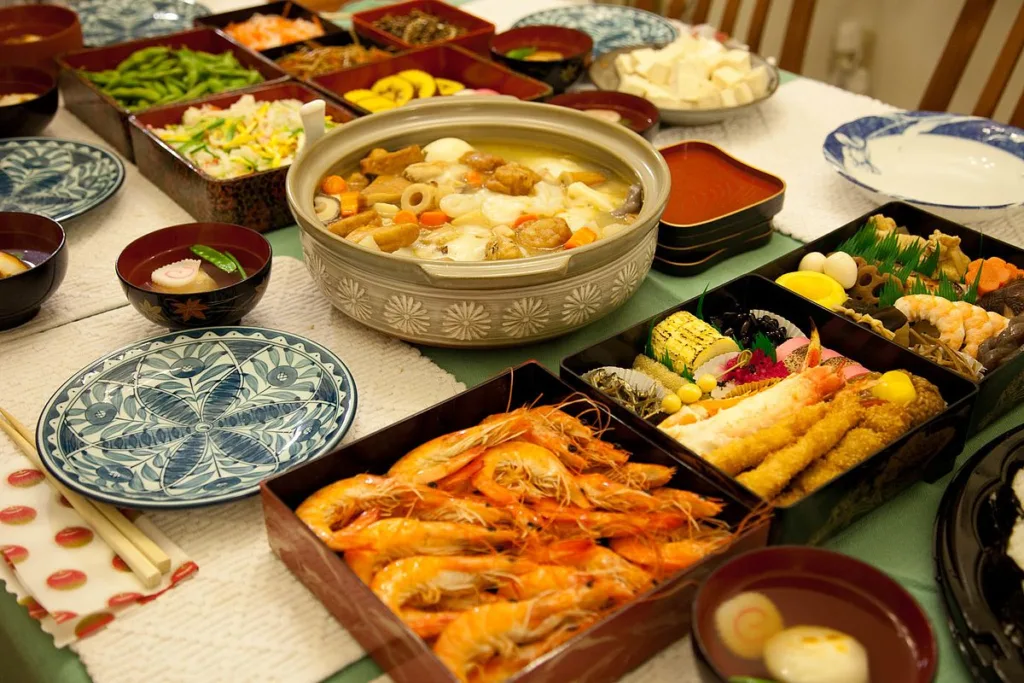
Kikuka-kabu: Celebration & Promotion
Kabu, or turnip, is served in the shape of kiku (chrysanthemum). The chrysanthemum is the Japanese national flower and is often in connection with traditional festivities and celebrations (as well as the imperial family). There is also a belief from China that it drives away evil and allows you to live longer.
Gobo: Strength & Stability
*Gobo* (burdock root) takes a while to cut down and it’s exactly this characteristic that landed it on the Osechi Ryori dish. Just like those roots that grow so firmly in the soil, burdock symbolizes hope for a life of strength and stability and a life of physical strength. In other words: eat this at New Year’s and nothing can bring you down.
Tai: Auspiciousness & Celebration
Tai, or sea bream, is a fish for celebration in Japan. A play on words, it derives from metal, meaning “to celebrate.” The People eat fish when a child is born or at weddings in the hope of bringing prosperity and happiness. Make a wish as you remove those bones…
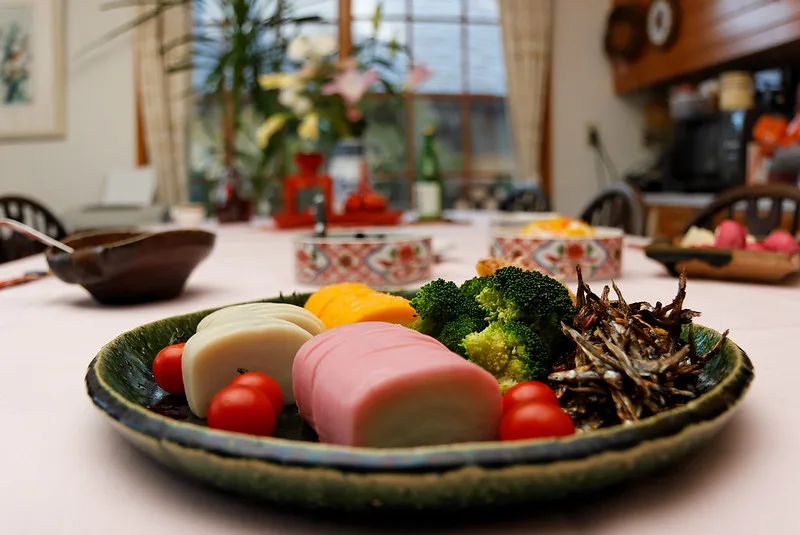
Eating Osechi Ryori
The significance of eating Osechi Ryori on New Year’s Day
Osechi Ryori is an essential part of Japanese New Year’s celebrations, and its significance goes beyond being a simple meal. The elaborate cuisine, comprising numerous dishes served in beautifully decorated boxes, symbolizes various hopes and wishes for the coming year. Each dish is thoughtfully there to represent a specific virtue or desire, such as good health, longevity, prosperity, or happiness. By consuming Osechi Ryori on New Year’s Day, the Japanese believe that they are imbuing themselves with these qualities, and therefore, starting the new year on a positive note.
Cultural practices and customs associated with eating Osechi Ryori
In Japan, New Year’s Day is a time for family reunions and honoring one’s ancestors. Eating Osechi Ryori is an essential part of this cultural practice. Traditionally, the dishes are served in multi-tiered, lacquered boxes called jubako, which are passed down through generations as family heirlooms. Each family member takes turns opening the boxes and serving the dishes to others, symbolizing the sharing of love and respect. Moreover, it is customary to eat Osechi Ryori in a specific order, starting from the top-left corner and moving in a clockwise direction. People believe this practice is to bring good fortune and prevent bad luck.
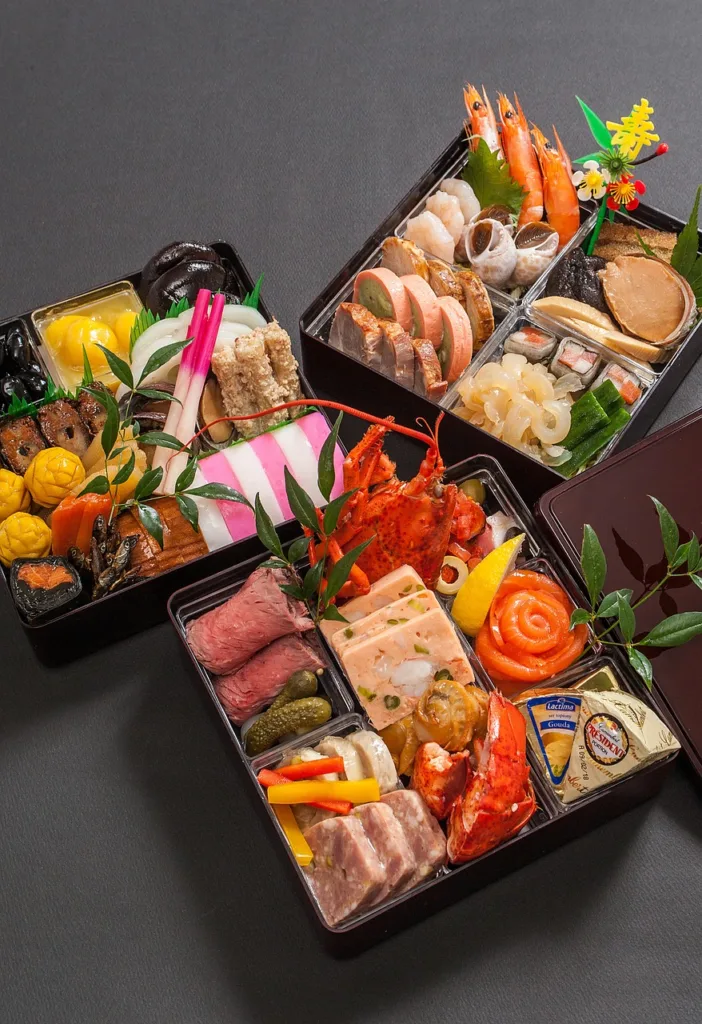
Traditional Ways to Eat Osechi Ryori
Osechi Ryori is not just a collection of dishes, but a set of traditions and customs that surround the consumption of food during Japanese New Year celebrations.
One of the most important traditions is to eat Osechi Ryori on New Year’s Day. It brings good luck and prosperity for the coming year. Another tradition is to eat each dish in a specific order, which is said to symbolize the progression of the year. For example, black beans are typically eaten first to ward off evil spirits, followed by herring roe to symbolize fertility and prosperity.
When eating Osechi Ryori, it’s also common to use special dishes and utensils, such as lacquered bento boxes and chopsticks made from bamboo or wood. The presentation of the food is also important, with each dish carefully arranged in the box or on a platter to showcase its colors and textures.
It’s traditional to share Osechi Ryori with family and friends, which is seen as a way to strengthen bonds and start the new year off on a positive note. This often involves inviting loved ones to share a meal together, or exchanging Osechi Ryori gifts with neighbors and coworkers. By following these traditions, Japanese people not only enjoy delicious food but also strengthen their social connections and cultural identity.
Recommended drinks to pair with the food
When it comes to pairing drinks with Osechi Ryori, there are a few traditional options that can complement the flavors and textures of the food.
One popular choice is sake, a Japanese rice wine. There are many different types of sake available, from dry and crisp to sweet and fruity, so it’s important to choose a sake that complements the flavors of the specific dishes you’re eating. For example, a light, dry sake might pair well with fish dishes, while a richer, more complex sake could complement meat dishes.
Another traditional drink to pair with Osechi Ryori is green tea. This light, refreshing beverage can help cleanse the palate between courses and enhance the flavors of the food. In addition, green tea is a popular choice for its health benefits, which include antioxidants and relaxation properties.
Finally, some people may choose to pair Osechi Ryori with beer or other alcoholic beverages, depending on their personal preferences. It’s worth noting, however, that some of the dishes in Osechi Ryori can be quite delicate, so it’s important to choose a drink that won’t overpower the flavors of the food.
Exploring the Art and Symbolism of Osechi Ryori
Creating osechi ryori at home can be a special and meaningful way to celebrate Japanese culture and the New Year holiday. This traditional Japanese feast is deeply rooted in history and symbolism, with each dish representing different hopes and wishes for the coming year. By preparing these dishes yourself, you can connect with Japanese traditions and express your own wishes for the year to come.
Essentials for making osechi ryori at home
- Tiered bento boxes: Osechi ryori is typically served in tiered bento boxes called “jubako.” These boxes are designed to hold a variety of small dishes, and they are often adorned with traditional Japanese motifs.
- Traditional ingredients: Osechi ryori includes a variety of traditional Japanese ingredients such as black beans, chestnuts, fish cakes, and sweet rolled omelets. It is also common to use ingredients that symbolize good luck and prosperity, such as shrimp and lotus root.
- Preparation time: Many of the dishes included in osechi ryori require a significant amount of preparation time, so it’s important to plan ahead and start cooking several days in advance.
- Minimalism: Like many aspects of Japanese culture, osechi ryori emphasizes minimalism and simplicity. Keep the dishes small and visually appealing, and aim for a balanced presentation of flavors and textures.
- Traditional tableware: Using traditional Japanese tableware, such as ceramic dishes and chopsticks, can enhance the overall dining experience and create an authentic atmosphere.
By incorporating these elements into your preparation of osechi ryori, you can create a beautiful and delicious New Year’s feast that honors Japanese culinary traditions and symbolizes good luck and prosperity for the year to come.
Hot Items for Creating a Traditional Japanese dining experience at Home
Creating a traditional Japanese dining experience at home for friends can be a unique and enjoyable way to share Japanese culture and cuisine with others. It provides an opportunity to showcase the beauty and simplicity of Japanese design, as well as the importance of presentation in Japanese cuisine.
- Tatami mats or low dining table: Japanese dining typically takes place on a tatami mat or a low dining table called a “chabudai.” Sitting on the floor is a common practice in Japanese culture, so consider using a low table and cushions or floor chairs for seating.
- Tableware: Japanese tableware such as bowls, plates, and chopsticks are an important part of the dining experience. Traditional Japanese ceramic dishes, lacquerware, or wooden bowls are all good choices.
- Chopsticks: Using chopsticks is a must for a traditional Japanese dining experience. You can purchase chopsticks made of bamboo or wood, or invest in a set of high-quality chopsticks made from materials like silver or gold.
- Food presentation: In Japanese cuisine, the presentation of the food is just as important as the taste. Consider using a bento box or arranging the food in a visually pleasing way on the plate.
- Green tea: Green tea is an integral part of Japanese culture and is often served during meals. Consider brewing a pot of green tea to accompany your meal.
Our Favorites!
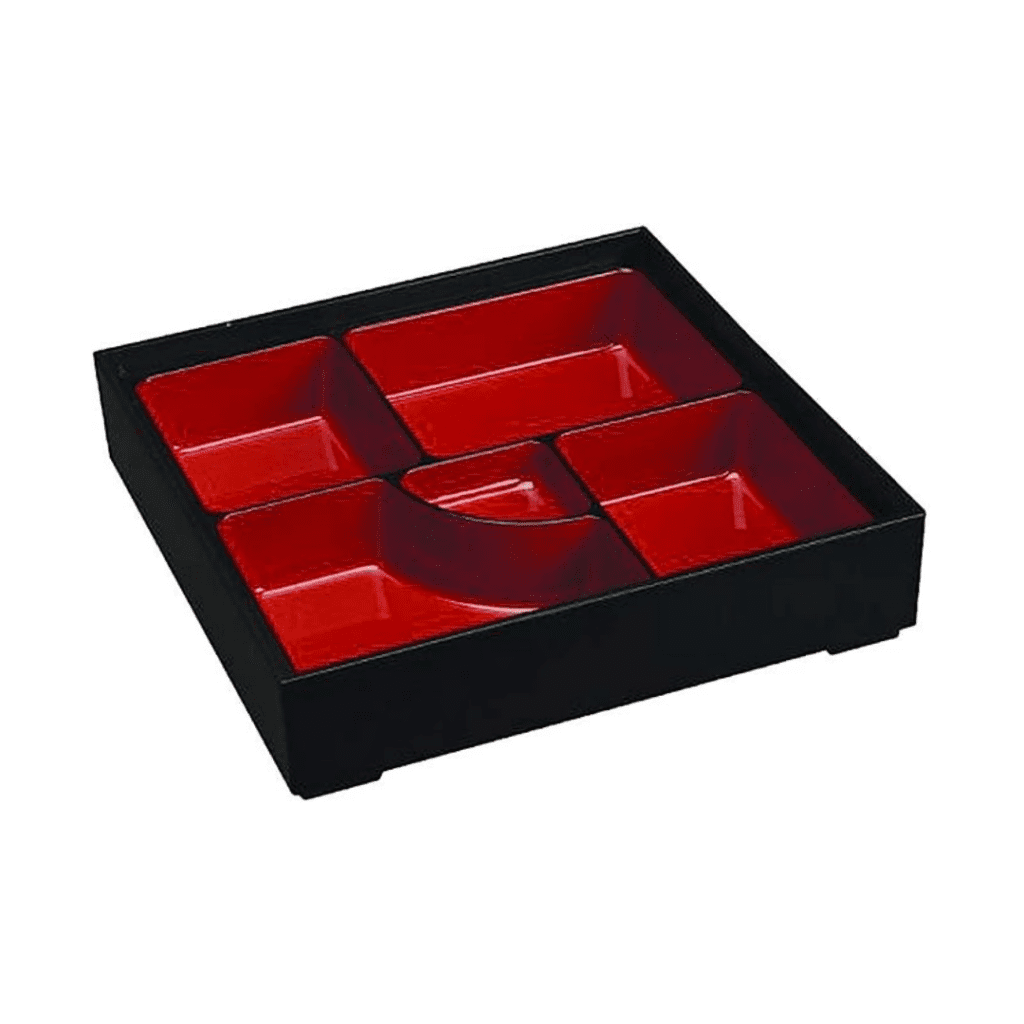
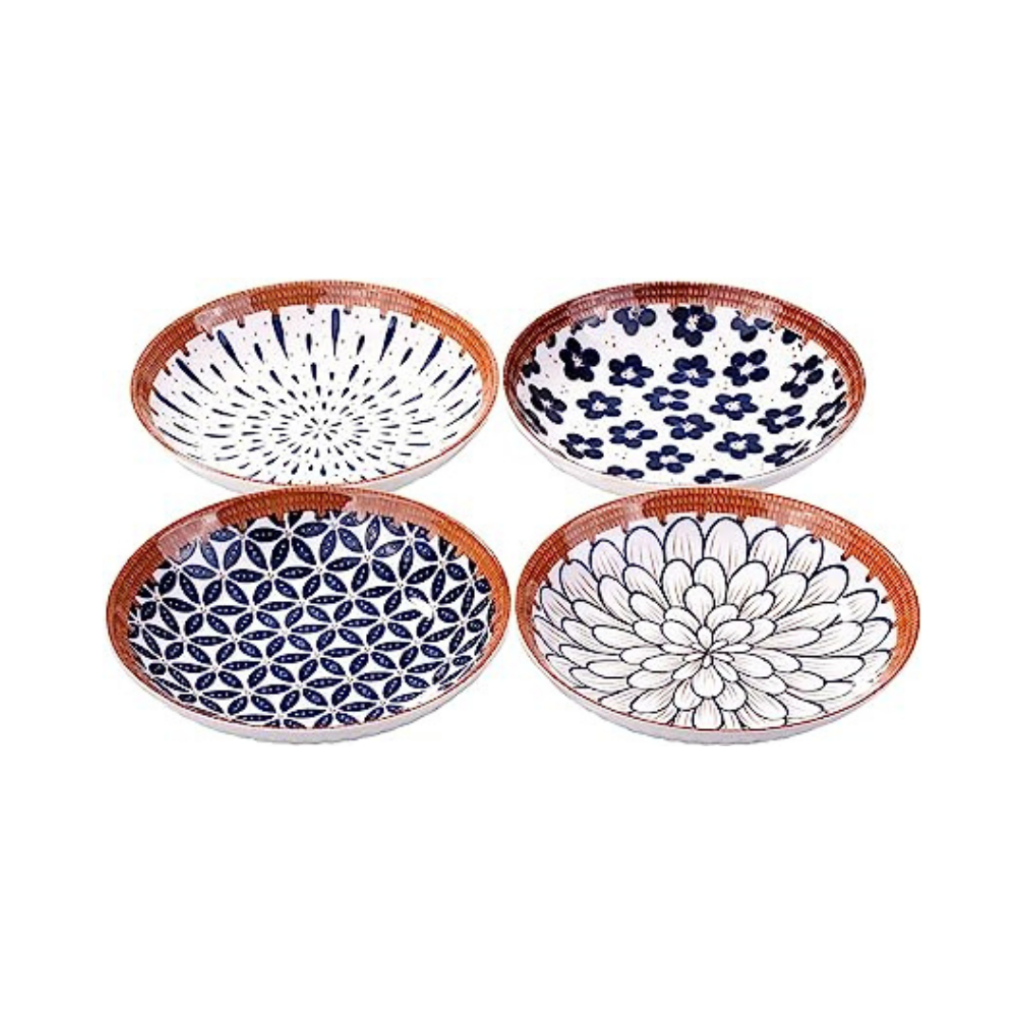
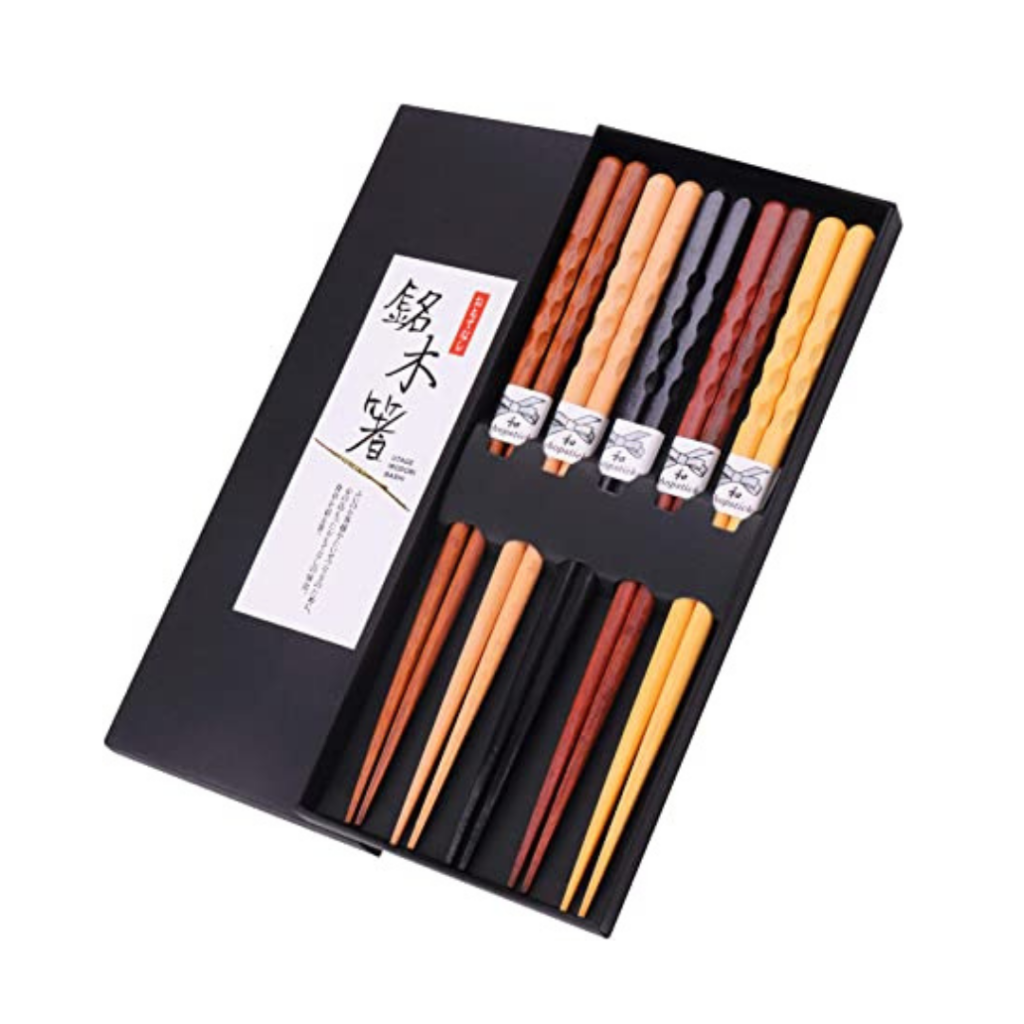
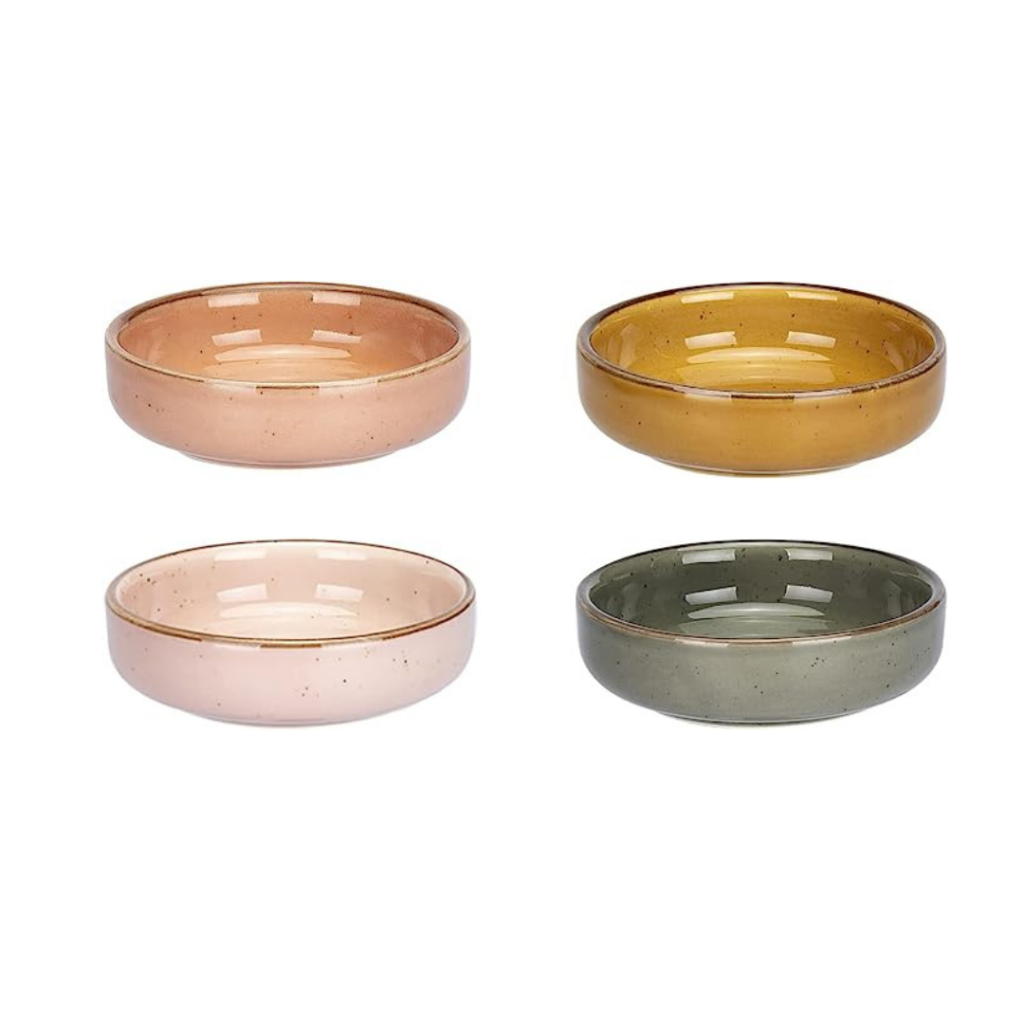

Tips for experiencing Osechi Ryori in Japan
If you’re interested in experiencing Osechi Ryori during a visit to Japan, there are a few tips that can help you make the most of this cultural tradition.
First and foremost, it’s important to plan ahead and make reservations early, as many restaurants and hotels offer special Osechi Ryori menus during the New Year season. You may also want to consider visiting a local market or food hall to sample a variety of Osechi Ryori dishes.
When eating Osechi Ryori, it’s important to respect the traditions and customs surrounding the food. This includes eating each dish in a specific order and using traditional utensils and dishes. You may also want to learn about the symbolism and significance of each dish to fully appreciate the cultural significance of the food.
In addition, it’s worth noting that Osechi Ryori can be quite expensive, especially if you’re eating at a high-end restaurant or hotel. To save money, you may want to consider ordering a smaller set or sharing a meal with friends or family.
Finally, don’t be afraid to ask locals for recommendations or advice on where to try Osechi Ryori. Many Japanese people take pride in their culinary traditions and are happy to share their knowledge with visitors.
If you have the opportunity to visit Japan during the New Year season, we encourage you to try Osechi Ryori and immerse yourself in Japanese culture and traditions.
